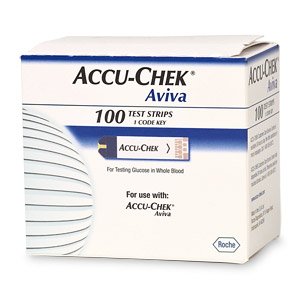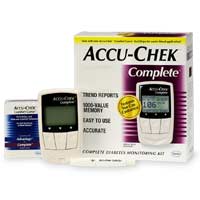For more information, visit
Diabetes.org:
You've probably wondered how you got diabetes. You may worry that your children will get it too.
Unlike some traits, diabetes does not seem to be inherited in a simple pattern. Yet clearly, some people are born more likely to get diabetes than others.
What leads to diabetes?
Type 1 and type 2 diabetes have different causes. Yet two factors are important in both. First, you must inherit a predisposition to the disease. Second, something in your environment must trigger diabetes.
Genes alone are not enough. One proof of this is identical twins. Identical twins have identical genes. Yet when one twin has type 1 diabetes, the other gets the disease at most only half the time. When one twin has type 2 diabetes, the other's risk is at most 3 in 4.
Type 1 diabetes
In most cases of type 1 diabetes, people need to inherit risk factors from both parents. We think these factors must be more common in whites because whites have the highest rate of type 1 diabetes. Because most people who are at risk do not get diabetes, researchers want to find out what the environmental triggers are.
One trigger might be related to cold weather. Type 1 diabetes develops more often in winter than summer and is more common in places with cold climates. Another trigger might be viruses. Perhaps a virus that has only mild effects on most people triggers type 1 diabetes in others.
Early diet may also play a role. Type 1 diabetes is less common in people who were breastfed and in those who first ate solid foods at later ages.
In many people, the development of type 1 diabetes seems to take many years. In experiments that followed relatives of people with type 1 diabetes, researchers found that most of those who later got diabetes had certain autoantibodies in their blood for years before.
(Antibodies are proteins that destroy bacteria or viruses. Autoantibodies are antibodies 'gone bad,' which attack the body's own tissues.)
Type 2 diabetes
Type 2 diabetes has a stronger genetic basis than type 1, yet it also depends more on environmental factors. Sound confusing? What happens is that a family history of type 2 diabetes is one of the strongest risk factors for getting the disease but it only seems to matter in people living a Western lifestyle.
Americans and Europeans eat too much fat and too little carbohydrate and fiber, and they get too little exercise. Type 2 diabetes is common in people with these habits. The ethnic groups in the United States with the highest risk are African Americans, Mexican Americans, and Pima Indians.
In contrast, people who live in areas that have not become Westernized tend not to get type 2 diabetes, no matter how high their genetic risk.
Obesity is a strong risk factor for type 2 diabetes. Obesity is most risky for young people and for people who have been obese for a long time.
Gestational diabetes is more of a puzzle. Women who get diabetes while they are pregnant are more likely to have a family history of diabetes, especially on their mothers' side. But as in other forms of diabetes, nongenetic factors play a role. Older mothers and overweight women are more likely to get gestational diabetes.
Type 1 diabetes: your child's risk
In general, if you are a man with type 1 diabetes, the odds of your child getting diabetes are 1 in 17. If you are a woman with type 1 diabetes and your child was born before you were 25, your child's risk is 1 in 25; if your child was born after you turned 25, your child's risk is 1 in 100.
Your child's risk is doubled if you developed diabetes before age 11. If both you and your partner have type 1 diabetes, the risk is between 1 in 10 and 1 in 4.
There is an exception to these numbers. About 1 in every 7 people with type 1 diabetes has a condition called type 2 polyglandular autoimmune syndrome.
In addition to having diabetes, these people also have thyroid disease and a poorly working adrenal gland. Some also have other immune system disorders. If you have this syndrome, your child's risk of getting the syndrome including type 1 diabetes is 1 in 2.
Researchers are learning how to predict a person's odds of getting diabetes. For example, most whites with type 1 diabetes have genes called HLA-DR3 or HLA-DR4.
If you and your child are white and share these genes, your child's risk is higher. (Suspect genes in other ethnic groups are less well studied. The HLA-DR7 gene may put African Americans at risk, and the HLA-DR9 gene may put Japanese at risk.)
Other tests can also make your child's risk clearer. A special test that tells how the body responds to glucose can tell which school-aged children are most at risk.
Another more expensive test can be done for children who have siblings with type 1 diabetes. This test measures antibodies to insulin, to islet cells in the pancreas, or to an enzyme called glutamic acid decarboxylase. High levels can indicate that a child has a higher risk of developing type 1 diabetes.
Type 2 diabetes: your child's risk
Type 2 diabetes runs in families. In part, this tendency is due to children learning bad habits eating a poor diet, not exercising--from their parents. But there is also a genetic basis.
In general, if you have type 2 diabetes, the risk of your child getting diabetes is 1 in 7 if you were diagnosed before age 50 and 1 in 13 if you were diagnosed after age 50.
Some scientists believe that a child's risk is greater when the parent with type 2 diabetes is the mother. If both you and your partner have type 2 diabetes, your child's risk is about 1 in 2.
People with certain rare types of type 2 diabetes have different risks. If you have the rare form called maturity-onset diabetes of the young (MODY), your child has almost a 1-in-2 chance of getting it, too.
More Information on Genetics
If you would like to learn more about the genetics of all forms of diabetes, the National Institutes of Health has recently published The Genetic Landscape of Diabetes. This free online book provides an overview of the current knowledge about the genetics of type 1 and type 2 diabetes, as well other less common forms of diabetes. The book is written for health professionals and for people with diabetes interested in learning more about the disease.



















